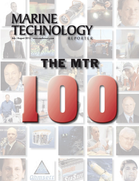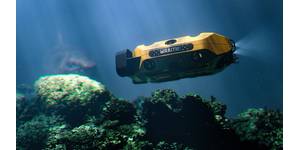MTR100 '13 Sea-Bird Electronics
Marine Technology Reporter
13431 NE 20th Street
Bellevue, Wash. 98005
Tel: 425-643-9866
Email: [email protected]
Website: www.seabird.com
CEO/President: Dr. Norge Larson
Engineering Director: Tom Mitchell
Number of Employees: 120
Testing Capabilities
More than 40,000 calibrations performed per year, with conductivity, temperature, and dissolved oxygen calibration baths (27), 10,000 psia hydrostatic pressure test vessels (3), deadweight testers, in-house metrology laboratory (water triple-point cells, gallium melting point cells, IAPSO Standard Seawater, 8400B Autosal).
The Company:
Sea-Bird Electronics manufactures oceanographic CTDs and integrated water sampling systems. The CTDs are designed to measure conductivity, temperature, pressure (depth), dissolved oxygen, and other variables, enabling the determination of salinity, density, and other properties contributing to ocean circulation, marine ecosystem function, and global climate dynamics.
The Tech:
CTDs on research vessels, fixed moorings, moored profilers, autonomous drifting profilers (Argo floats), surface salinity floats, AUVs, autonomous gliders, and large-scale networked sensor arrays in ocean observatories present different challenges in acquiring high-accuracy data. The instruments are designed to minimize dynamic errors and preserve initial accuracy. Sea-Bird profiling CTDs share key features that minimize dynamic errors. There is an enclosed flow path within which critical sensors (T, C, DO) are located. Pumping water through the system forces all measurements to be made on the same water sample, with predictable delay and flow effects. By pumping at a constant rate, T and C sensor response times can be engineered to match and remain independent of CTD speed. This dramatically reduces salinity spiking errors produced when sensors with different response times encounter a gradient. Since the water transit time is fixed, lag times between measurements are a known constant, so measurements can be aligned and coordinated relative to pressure in hardware or data processing. Sea-Bird moored CTDs also make measurements in an enclosed flow path, for different reasons. Pumping delivers a new water sample to the conductivity and oxygen sensors, independent of ambient circulation. Between measurements, water is trapped in the sensors and plumbing; anti-foulant concentration accumulates to effective levels by diffusion, preserving initial accuracy for long deployments.
(As published in the July/August 2013 edition of Marine Technologies - www.seadiscovery.com)



 August 2025
August 2025



